|
Squirrels, mule deer, and kangaroo rats are among the most commonly encountered mammals in the monument. However, there are many other species often found during the course of a visit. They have all adapted to living in this dry environment, and many take advantage of the shelter provided by the numerous lava tube caves. Bats, flying mammals common at night and in the caves, are discussed on their own page.
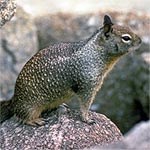
California Ground Squirrel Our most often seen mammal in the warmer seasons, these squirrels are easily identified by the dark gray patch between their shoulders. They often perch on small trees, shrubs, or rock outcrops and survey the area for predators or territorial rivals. 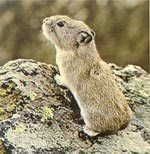
American Pika The pika is a fascinating little relative of rabbits - it is not closely related to rodents like squirrels, mice and rats. In fact, it is often called a “rock rabbit,” even though they lack tails and have small, rounded ears. Pika usually live in cold alpine areas. They survive in the lava beds because they keep cool in the caves and cave collapse areas, where they live among the rocky talus as they would on high mountain slopes. Their population in the Great Basin has been studied as an example of how climate change can impact species dependent on cooler temperatures. 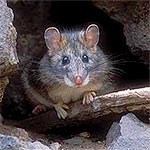
Woodrats Woodrats, often called “packrats,” are commonly found in caves and in old juniper stands. In both places, their large nests of twigs and branches are conspicuous. Look for them in the trees near the last sharp turn at the top of the Schonchin Butte trail. If you hear a loud hissing while exploring a cave, it’s an angry little woodrat trying to defend his home. Don’t be alarmed, these little guys make lots of noise, but stay well hidden. 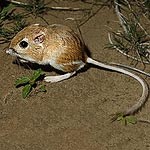
Kangaroo Rat Any visitor that drives monument roads at night is likely to encounter these little rodents hopping around on their hind legs, their long tufted tail flying around behind them. The secret to their success in this environment is their body's ability to generate water from the seeds and vegetation they eat. They never have to drink liquid water their entire lives! 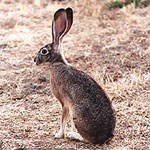
Black-Tailed Jack Rabbit There are two kinds of rabbits: true rabbits such as the desert cottontail commonly found in the monument, and the hares. Jack rabbits are a kind of hare, easily identified by their larger size, longer legs, and remarkable ears. They use these ears the same way elephants do, to cool themselves in warm weather by circulating blood through them. Their large surface area allows body heat to radiate away. 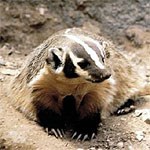
Badger Burrowing predators, badgers are our largest member of the weasel family. They are not common, but might be seen throughout the park. They have a fierce demeanor, and should not be approached, despite only being the size of a stocky housecat. They eat almost anything they can catch, but primarily hunt burrowing rodents. They are powerful diggers, and quickly excavate deep into the dens of their prey with a tremendous display of flying dirt. 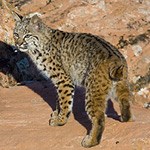
Bobcat Our smallest and most common wild cat, the largest males grow to around 30 pounds, females to 20. They have a very small tail, and are spotted all over. A mother and her cubs are often seen at night on the park roads, another good reason to obey speed limits and be on the lookout for wildlife when traveling around the park. 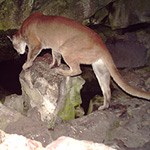
Mountain Lion Call them what you will: panther, puma, cougar, or mountain lion, these large cats are majestic animals. They average 150 pounds as adults, though some reach an astonishing 250 pounds. Besides their much greater size, they have a very long tail and even coloration, easily distinguishing them from bobcats. They are "crepuscular," meaning most active at dusk and dawn, when visitors are encouraged to hike in groups and understand how to be safe in "lion country." 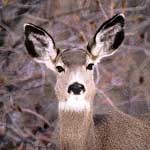
Mule Deer Larger than white-tailed deer, mule deer are named for the resemblance of their ears to those of mules. Common year-round, in winter they gather into herds along Hill Road at the north end of the park, attracted by the farm fields and water of the Tulelake basin. Seemingly abandoned, fawns are often discovered hiding in tall grass or shrubs to evade predators. If you find one, please leave it alone; It's mother is somewhere nearby, also waiting for you to move along. For a full list of identified mammals in Lava Beds National Monument, select "Mammals" from the list below. Select a Park:Select a Species Category (optional):
Search results will be displayed here.
|
Last updated: January 27, 2024
